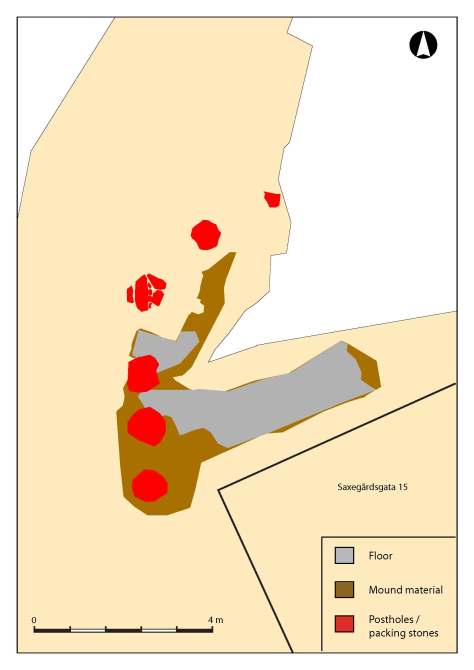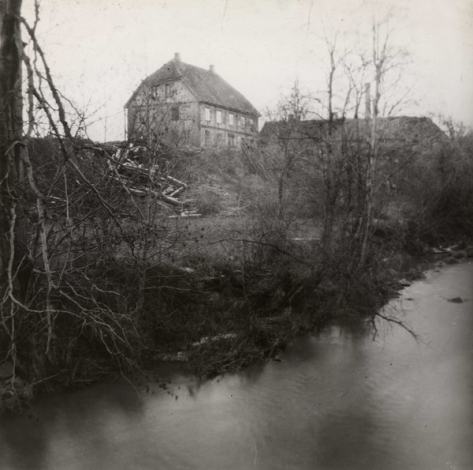Excavating in small trenches is often frustrating and fruitless. If you manage to find anything then you can guarantee that the stuff you find will throw up more questions than answers. Unlike on Time Team, these trenches usually can’t be moved, let alone extended to follow the archaeology.
Sometimes however, the trenches behave and you find that they’re not only in the right place but that the archaeology makes sense. This unusual occurrence happened in Gamlebyen last year during excavations conducted as part of the Follo Line Project (Follobaneprosjektet). The area in question was centred on the eastern side of the Klypen railway embankment, close to Saxegårdsgata 15.
The initial excavation uncovered a cemetery related to the church (see http://www.niku.no/no/arkeologi/utgravninger_og_funn/follobane-prosjektet/Over+100+graver+avdekket+ved+Nikolaikirkens+kirkeg%C3%A5rd+i+Oslo.9UFRzU2V.ips) . This in itself was very interesting, however it quickly became apparent that the burial ground had been cut into pre-existing buildings. Most of these buildings survived only as clay floors while some had traces of preserved timbers. One building, however, was very different from the others. The building appears to have been constructed on a mound which in turn was surrounded by posts (see figure 2 and overview in figure 1). One possible interpretation is that the postholes which lie around the mound are remnants of a defensive wall. This fits in well with the building’s elevated position both on the mound and in the landscape.


The mound material was seen in the sections of two small trenches lying several meters apart. Without these trenches it would have been very easy to misinterpret the mound as just a series of disconnected layers. Once the presence of a mound was established it became easier to interpret which features were contemporary with this possible defensive structure. The result is the plan you see below. The original building consisted of a clay floor which was laid directly onto the mound. No other building remains survived, however it’s probable that any timber would have been removed and re-used elsewhere.
Ok, what is this building and why is it here? Well I don’t know, but I can make a good guess that it probably had something to do with Kongsgården which lay roughly 40 meters to the south-west of the area. Kongsgården was the king’s residence which was established in the middle of the 11th-century and continued in use right up until the late medieval period. Østre strete was one two main thoroughfares leading through town to Kongsgården. It would therefore have been important that all traffic coming into and leaving Kongsgården could be controlled and monitored. The excavated building itself lay alongside Østre strete and would have been an imposing site for those approaching the defences. The building remains could have been part of an early warning system outside Kongsgården, comprising watchtowers and sentry posts.
What would strengthen this system would be if Østre strete was flanked by two such buildings. While there’s no evidence for another building, there is a natural place where one could stand, that is under Saxegården. Saxegården occupies an elevated position in the landscape which falls steeply in all directions away from Østre strete (see figure 3). In the medieval period the Alna river meandered around the back of this area. The river would have further enhanced the defences around Kongsgården. In addition to this, a 9.5 meter wide defensive ditch unearthed in 2014 may have protected the eastern wall of Kongsgården, forming part of a solidly defended stronghold.

http://www.oslobilder.no/OMU/OB.F07053
So there you have it: mounds, postholes and a floor – all found in a few small trenches. Put them together and you come up with a medieval defensive structure. Well not really. The stratigraphy stays the same but interpretation in the post-excavation phase can be very fluid. Don’t be surprised if next year the building is downgraded to a simple dwelling!
Skrevet av feltleder Mick Derrick.